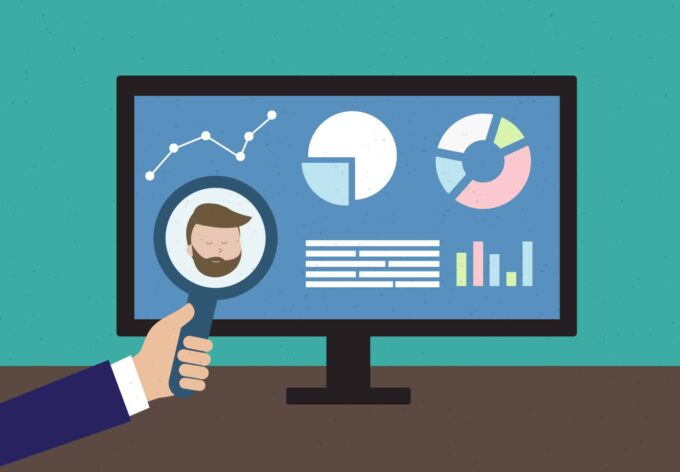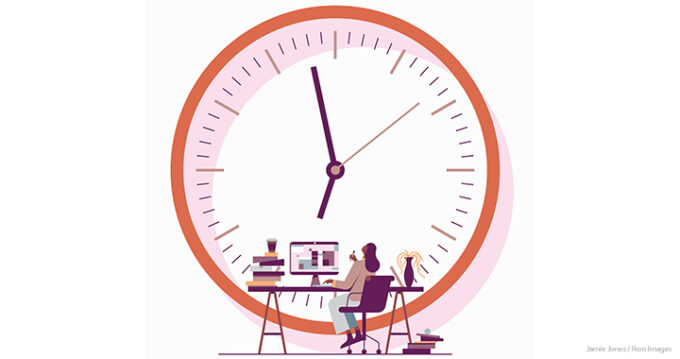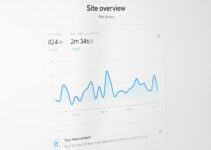Over the last few years, the number of companies using employee monitoring or time-tracking tools has increased significantly. In no small part that is due to the popularity of remote work – which now encompasses over 34% of the US workforce according to a survey by MIT.
With more employees working from remote locations, employee monitoring, and time tracking have become the best way to keep tabs on what they’re doing. In that way, they can act as a tool to help manage remote workers more effectively.
However what many people don’t realize is that there is actually a subtle difference between employee monitoring and time tracking. And if you’re thinking about using either it is important that you understand the difference so that you know which one to choose.
What is Time Tracking?
Source: quora.com
Think of time tracking as a way to measure the amount of time employees spend working. In the past it would normally involve a ‘clock in’ system or time sheets, but nowadays more often than not it uses software to track exactly how long employees spend working.
The simplest version of time tracking tools may only track the total number of hours employees spend working. That can help ensure they’re working the right number of hours, and maybe help with overtime calculations.
However many time tracking tools go further than that and track the amount of time employees spend on specific tasks and projects. That makes it incredibly useful for project management, resource allocation, estimating timelines, and salary or billing calculations.
All in all, time tracking it is an essential tool to manage employees and projects.
What is Employee Monitoring?

Source: emailanalytics.com
In contrast to time tracking, employee monitoring is basically a way to track the activities of employees while they’re working. And yes – that includes the amount of time they spend working on various tasks, but it goes far beyond that.
The fact of the matter is that employee monitoring can track a wide variety of different activities depending on its features. A tool like Controlio for example is able to track app usage, websites visited, attendance, emails, IM messages, incoming and outgoing file transfers, print requests, web searches, and more.
Some features will let you monitor employees more closely. It can capture screenshots at regular intervals so that you can literally see exactly what employees are doing, and it can capture keystrokes too so you can monitor and log what they’re typing on their keyboard.
That isn’t all that separates different tools, features actually extend beyond just monitoring employees. It is able to track certain types of behavior, restrict access to particular websites, create monitoring profiles for different groups of employees, and generate scheduled reports.
In fact some of the tools are even able to calculate a productivity score for each employee. That score can be a useful metric to conveniently check an employee’s productivity is increasing or decreasing, and determine which employees are most productive.
Suffice to say Controlio can provide a much more detailed look into exactly what employees are up to at work and gives insights into their behavior. It can act as a productivity monitoring tool that identifies bottlenecks and other issues, tackles distractions that may cause time to be wasted, and pinpoints suspicious behavior.
In today’s day and age of increased awareness regarding personal data security it can act as a valuable preventive measure.
Is the Difference Important?
Now that you know the difference, it may appear that employee monitoring is really just a more comprehensive tool – which is true to a certain extent. But the difference between it and time tracking is actually more important than that and comes down to a question of invasiveness.
It goes without saying that employee monitoring is much more invasive than time tracking because it monitors the activities of employees more closely. The fact that employee monitoring could conceivably let employers look at emails, IM messages or other personal communication can make employees feel uncomfortable.
In short, employee monitoring comes with a stigma attached and could make employees feel their privacy is under threat and they’re being ‘spied upon’. That is something you will want to avoid as it can lead to other issues.
Compared to employee monitoring, time tracking generally doesn’t face that much pushback. That is because it is limited in terms of what data it captures, and so the threat that it poses to the privacy of employees is far less.
Which to Choose?

Source: fm-magazine.com
Deciding between employee monitoring and time tracking can be tough. On one hand, employee monitoring is far more powerful and has more potential applications – but it comes with a stigma attached. On the other hand time tracking is not as capable, but has fewer potential issues.
The best way to choose between them is to simply ask yourself what exactly you need out of these tools. If all you need is a way to track how much time employees are spending on tasks, then you probably don’t need a full-fledged employee monitoring tool – so why open the privacy can of worms that comes with it.
However if your goal is to manage employees, monitor their productivity, and improve data security then maybe you do need an employee monitoring tool. In that case your best bet is to be upfront with your employees, come up with a clear monitoring policy, and try to make it as non-invasive as possible.
Conclusion
If there’s one thing that should be clear at this point it’s that you probably have an important decision on your hands. Assuming you’re still not sure whether you would prefer using an employee monitoring or time tracking tool – why not try out a few of them. Many of these tools have free trials that you can use to check on their features and what they can do.
After you try it out, it should be easier for you to determine which type of tool has the features you need to accomplish your goals.






